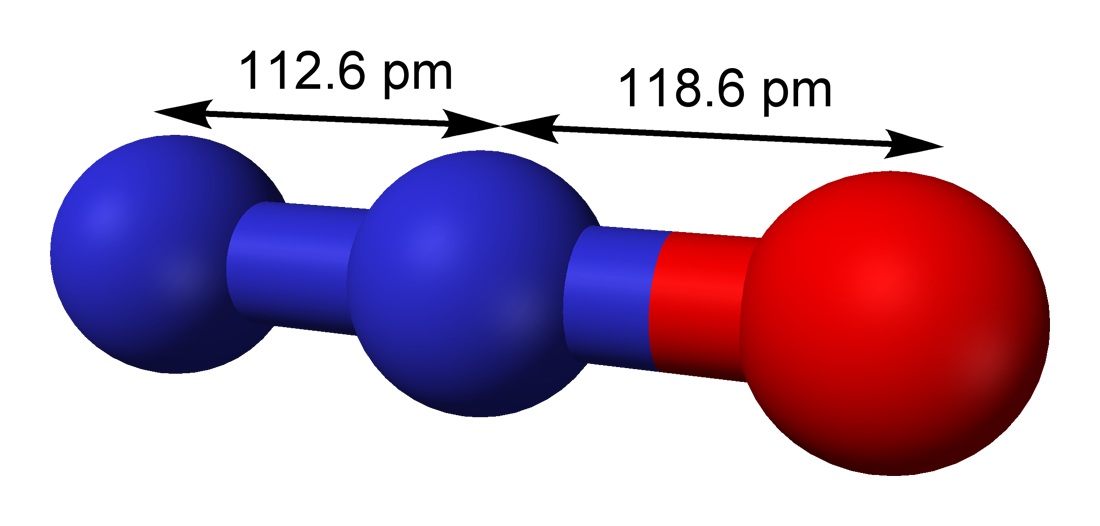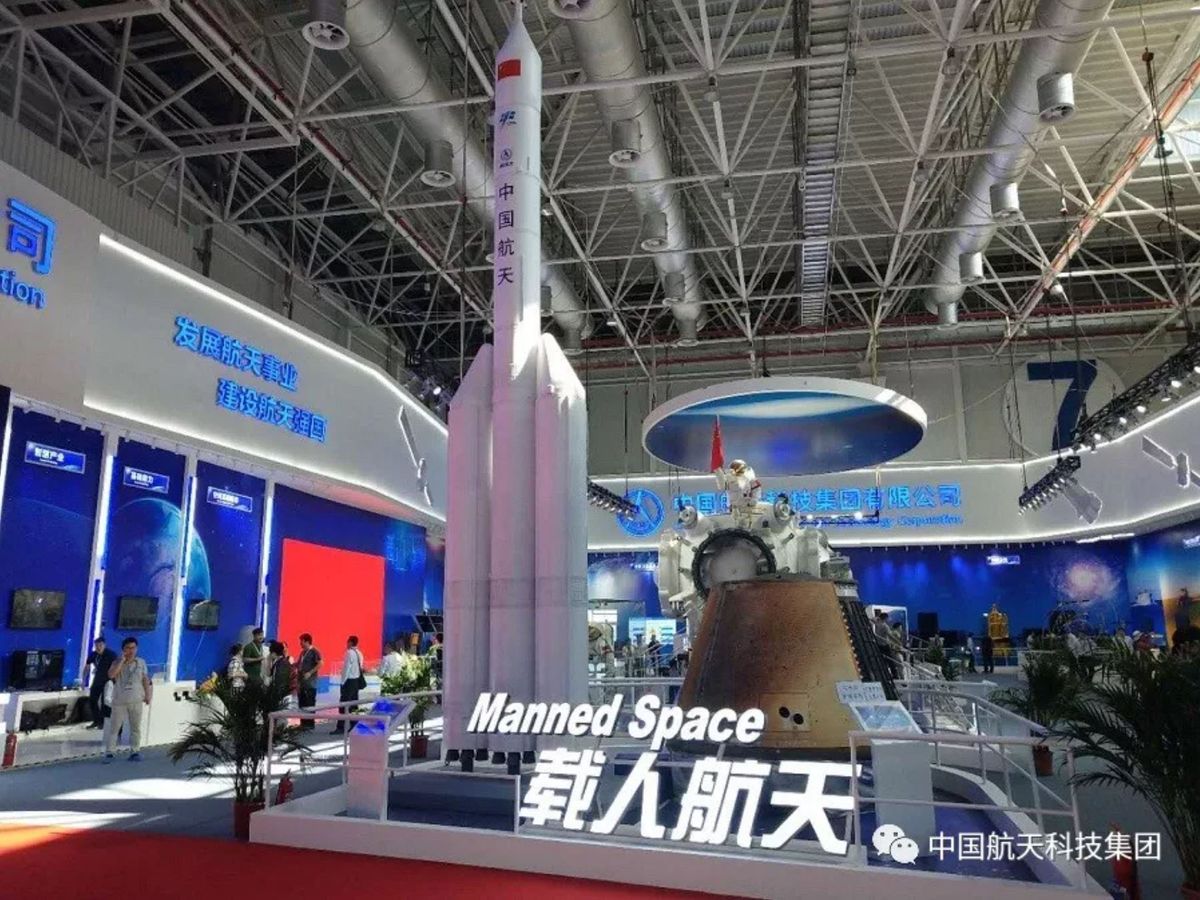skywatcher
New Member
- Joined
- Apr 25, 2020
- Messages
- 4,446
- Likes
- 1,344
China's Long March 5 rocket arrived at Wenchang Space Launch Center(WSLC) in Hainan island yesterday, in preparation for assembly and will be launched on 24 Nov 2020.
A Long March 4B rocket launched two Huanjin 2-A/B remote sensing satellites from Taiyuan on 27 Sept 2020.A Long March 4B rocket launched a Haiyang 2C ocean monitoring satellite from Jiuquan on 21 Sept 2020.
It is the 347 flight of Long March series.
Orbital launches from Chinese launch centers: 377
(Long March/Kuaizhou/Smart Dragon/Private launchers)
Jiuquan - 134
Xichang - 146
Taiyuan - 87
Wenchang - 8
Yellow Sea - 2
Coming up next:
A Long March 4B rocket will launch two Huanjin A/B remote sensing satellites on 2X Sept 2020.
HCP is actually NOFBXChinese startup Space Pioneer raises $14.7 million in series A round funding
Chinese space launch startup Space Pioneer, or Tianbin Keji in Chinese, announced that it has raised $14.7 million(100 million Yuan) in Series A round funding.
The funding is led by Zhejiang University and Zahe Investment Co., Ltd. Space Pioneer’s main business is the development of HCP liquid propellant, HCP rocket engine and HCP rocket.
For more information about HCP rocket, visit:

Nitrous oxide - Wikipedia
en.wikipedia.org

Nitrous oxide as a rocket propellant
Nitrous oxide is introduced as a multi-purpose propellant for spacecraft. Potential space applications of this propellant are given. Based on comparis…www.sciencedirect.com
Monopropellant rocket - Wikipedia
en.wikipedia.org
 en.wikipedia.org
en.wikipedia.org



It's still amazing that Americans managed to land Humans on Moon in 1969, almost 51 years ago, considering that next human flight to moon is still at least 10 years away, it will be around 61+ years for someone new to land there, an amazing feat that was achieved with way less technology.
China is building a new rocket to fly its astronauts on the moon
China is working on a massive new rocket that would be able to launch astronauts to land on the moon.www.space.com
China is building a new rocket to fly its astronauts on the moon
By Adrew Jones

China has revealed that it is working on a new rocket that could send astronauts to land on the moon.
Model of the new launch vehicle(nicknamed '921 rocket' in China) for human spaceflight on display in Zhuhai in 2018.
(Image: © CASC)
The new launch vehicle was unveiled at the 2020 China Space Conference in Fuzhou, east China on Sept. 18. The new launcher is designed to send a 27.6 ton (25 metric ton) spacecraft into trans-lunar injection. Mass at liftoff will be about 4.85 million lbs. (2,200 metric tons), nearly triple that of China's current largest rocket, the Long March 5.
Notably, the new rocket will feature three, 16.4-foot-diameter (5 meter) cores, in a style similar to two American rockets: United Launch Alliance's Delta IV Heavy and SpaceX's Falcon Heavy.
The as-yet-unnamed rocket will be 285 feet (87 m) long, with a three-stage central core, and it is being designed at the China Academy of Launch Vehicle Technology (CALT) in Beijing.
"The world is seeing a new wave of lunar exploration, crewed or uncrewed. International cooperation projects in crewed lunar exploration are intertwined and influencing each other," Zhou Yanfei, deputy general designer of China's human spaceflight program, told Chinese media.
China has not yet announced a date for a test flight or a potential lunar landing with the vehicle. However, Zhou added that a number of challenges remain in terms of crewed lunar landings.
"For example, we need our spacecraft to have the ability to reach the moon and return. But the transportation capacity of our Long March rockets cannot satisfy the demands. Currently our Shenzhou spaceships in low Earth orbit are unable to meet the needs of moon landing, either. Also, we need a lander for the mission," Zhou said.
In May, China flew a next-generation crewed spacecraft with the test launch of the new Long March 5B rocket. The new capsule is designed for deep space and lunar missions.
China has not officially approved a program to put astronauts on the moon, but has been talking openly about such missions. Previous mission profiles involved a Long March 9 rocket, expected to be similar in size to NASA's Saturn V or the agency's developing Space Launch System (SLS). The roughly 33-foot-diameter (10 m) rocket would need new rocket body-technology and huge, high-thrust engines(YF130, YF90 & YF79) and it would make a test flight around 2030.
Superseding the Long March 9 with the new launcher, which first appeared as a concept in 2018, as the preferred method of getting the moon means China may be able to get there quicker.
The new launcher will use clusters of already-developed YF-100K engines and 16.4-foot-diameter rocket bodies similar to the Long March 5, meaning less development work and required breakthroughs.
The vehicle hasn't formally been named but is nicknamed '921 rocket' in China, in reference to the codename for the country's human spaceflight program, which was founded on Sept. 21, 1992.
Decades into its human spaceflight program, China still faces key challenges. China will begin launching modules for its space station next year, but looking further afield brings new barriers. Zhou notes that China lacks "survival ability under extraterrestrial circumstances. We do not have any experience in that yet. Neither do we have ground support capacity. So far our crewed space exploration missions have been focused on tasks in low Earth orbit."
China is also working on a range of new rockets to update its older models that use toxic hypergolic propellant. In addition, the country is looking to implement new capabilities, including rockets that can launch and land again, like the SpaceX Falcon 9. An emerging commercial sector also includes companies such as iSpace and Landspace, which are developing their own vehicles to compete for launch contracts.

China is building a new rocket to fly its astronauts on the moon
China is working on a massive new rocket that would be able to launch astronauts to land on the moon.www.space.com
SpaceX has plan to fly a Japanese billionaire to the Moon by 2023.It's still amazing that Americans managed to land Humans on Moon in 1969, almost 51 years ago, considering that next human flight to moon is still at least 10 years away, it will be around 61+ years for someone new to land there, an amazing feat that was achieved with way less technology.
I love Space X but iirc plan was of flyby around Moon amirite? If we go by Elon's timeline then by 2025 we will reach MarsSpaceX has plan to fly a Japanese billionaire to the Moon by 2023.

A Japanese astronaut is in talks to join SpaceX's artist-filled Starship mission around the moon
JAXA astronaut Soichi Noguchi says he's had "a lot of discussions" with Japanese billionaire Yusaku Maezawa about joining his lunar Starship flight.www.businessinsider.com

the significance is that China may not need the Long March 9 for a crewed Moon mission. Long March 9 as a nonresuable launcher is too costly.
China is building a new rocket to fly its astronauts on the moon
China is working on a massive new rocket that would be able to launch astronauts to land on the moon.www.space.com
China is building a new rocket to fly its astronauts on the moon
By Adrew Jones

China has revealed that it is working on a new rocket that could send astronauts to land on the moon.
Model of the new launch vehicle(nicknamed '921 rocket' in China) for human spaceflight on display in Zhuhai in 2018.
(Image: © CASC)
The new launch vehicle was unveiled at the 2020 China Space Conference in Fuzhou, east China on Sept. 18. The new launcher is designed to send a 27.6 ton (25 metric ton) spacecraft into trans-lunar injection. Mass at liftoff will be about 4.85 million lbs. (2,200 metric tons), nearly triple that of China's current largest rocket, the Long March 5.
Notably, the new rocket will feature three, 16.4-foot-diameter (5 meter) cores, in a style similar to two American rockets: United Launch Alliance's Delta IV Heavy and SpaceX's Falcon Heavy.
The as-yet-unnamed rocket will be 285 feet (87 m) long, with a three-stage central core, and it is being designed at the China Academy of Launch Vehicle Technology (CALT) in Beijing.
"The world is seeing a new wave of lunar exploration, crewed or uncrewed. International cooperation projects in crewed lunar exploration are intertwined and influencing each other," Zhou Yanfei, deputy general designer of China's human spaceflight program, told Chinese media.
China has not yet announced a date for a test flight or a potential lunar landing with the vehicle. However, Zhou added that a number of challenges remain in terms of crewed lunar landings.
"For example, we need our spacecraft to have the ability to reach the moon and return. But the transportation capacity of our Long March rockets cannot satisfy the demands. Currently our Shenzhou spaceships in low Earth orbit are unable to meet the needs of moon landing, either. Also, we need a lander for the mission," Zhou said.
In May, China flew a next-generation crewed spacecraft with the test launch of the new Long March 5B rocket. The new capsule is designed for deep space and lunar missions.
China has not officially approved a program to put astronauts on the moon, but has been talking openly about such missions. Previous mission profiles involved a Long March 9 rocket, expected to be similar in size to NASA's Saturn V or the agency's developing Space Launch System (SLS). The roughly 33-foot-diameter (10 m) rocket would need new rocket body-technology and huge, high-thrust engines(YF130, YF90 & YF79) and it would make a test flight around 2030.
Superseding the Long March 9 with the new launcher, which first appeared as a concept in 2018, as the preferred method of getting the moon means China may be able to get there quicker.
The new launcher will use clusters of already-developed YF-100K engines and 16.4-foot-diameter rocket bodies similar to the Long March 5, meaning less development work and required breakthroughs.
The vehicle hasn't formally been named but is nicknamed '921 rocket' in China, in reference to the codename for the country's human spaceflight program, which was founded on Sept. 21, 1992.
Decades into its human spaceflight program, China still faces key challenges. China will begin launching modules for its space station next year, but looking further afield brings new barriers. Zhou notes that China lacks "survival ability under extraterrestrial circumstances. We do not have any experience in that yet. Neither do we have ground support capacity. So far our crewed space exploration missions have been focused on tasks in low Earth orbit."
China is also working on a range of new rockets to update its older models that use toxic hypergolic propellant. In addition, the country is looking to implement new capabilities, including rockets that can launch and land again, like the SpaceX Falcon 9. An emerging commercial sector also includes companies such as iSpace and Landspace, which are developing their own vehicles to compete for launch contracts.

China is building a new rocket to fly its astronauts on the moon
China is working on a massive new rocket that would be able to launch astronauts to land on the moon.www.space.com
I hope nothing will be broken and fallen down from the space to the earth this time. The rocket production is growing rapidly nowadays. Maybe one day we will be able to order the rocket from Amazon or Aliexpress since every country has one or more rocket engine companies like UK, USA, China, India and that is that the whole list yet.
China is building a new rocket to fly its astronauts on the moon
China is working on a massive new rocket that would be able to launch astronauts to land on the moon.www.space.com
China is building a new rocket to fly its astronauts on the moon
By Adrew Jones

China has revealed that it is working on a new rocket that could send astronauts to land on the moon.
Model of the new launch vehicle(nicknamed '921 rocket' in China) for human spaceflight on display in Zhuhai in 2018.
(Image: © CASC)
The new launch vehicle was unveiled at the 2020 China Space Conference in Fuzhou, east China on Sept. 18. The new launcher is designed to send a 27.6 ton (25 metric ton) spacecraft into trans-lunar injection. Mass at liftoff will be about 4.85 million lbs. (2,200 metric tons), nearly triple that of China's current largest rocket, the Long March 5.
Notably, the new rocket will feature three, 16.4-foot-diameter (5 meter) cores, in a style similar to two American rockets: United Launch Alliance's Delta IV Heavy and SpaceX's Falcon Heavy.
The as-yet-unnamed rocket will be 285 feet (87 m) long, with a three-stage central core, and it is being designed at the China Academy of Launch Vehicle Technology (CALT) in Beijing.
"The world is seeing a new wave of lunar exploration, crewed or uncrewed. International cooperation projects in crewed lunar exploration are intertwined and influencing each other," Zhou Yanfei, deputy general designer of China's human spaceflight program, told Chinese media.
China has not yet announced a date for a test flight or a potential lunar landing with the vehicle. However, Zhou added that a number of challenges remain in terms of crewed lunar landings.
"For example, we need our spacecraft to have the ability to reach the moon and return. But the transportation capacity of our Long March rockets cannot satisfy the demands. Currently our Shenzhou spaceships in low Earth orbit are unable to meet the needs of moon landing, either. Also, we need a lander for the mission," Zhou said.
In May, China flew a next-generation crewed spacecraft with the test launch of the new Long March 5B rocket. The new capsule is designed for deep space and lunar missions.
China has not officially approved a program to put astronauts on the moon, but has been talking openly about such missions. Previous mission profiles involved a Long March 9 rocket, expected to be similar in size to NASA's Saturn V or the agency's developing Space Launch System (SLS). The roughly 33-foot-diameter (10 m) rocket would need new rocket body-technology and huge, high-thrust engines(YF130, YF90 & YF79) and it would make a test flight around 2030.
Superseding the Long March 9 with the new launcher, which first appeared as a concept in 2018, as the preferred method of getting the moon means China may be able to get there quicker.
The new launcher will use clusters of already-developed YF-100K engines and 16.4-foot-diameter rocket bodies similar to the Long March 5, meaning less development work and required breakthroughs.
The vehicle hasn't formally been named but is nicknamed '921 rocket' in China, in reference to the codename for the country's human spaceflight program, which was founded on Sept. 21, 1992.
Decades into its human spaceflight program, China still faces key challenges. China will begin launching modules for its space station next year, but looking further afield brings new barriers. Zhou notes that China lacks "survival ability under extraterrestrial circumstances. We do not have any experience in that yet. Neither do we have ground support capacity. So far our crewed space exploration missions have been focused on tasks in low Earth orbit."
China is also working on a range of new rockets to update its older models that use toxic hypergolic propellant. In addition, the country is looking to implement new capabilities, including rockets that can launch and land again, like the SpaceX Falcon 9. An emerging commercial sector also includes companies such as iSpace and Landspace, which are developing their own vehicles to compete for launch contracts.

China is building a new rocket to fly its astronauts on the moon
China is working on a massive new rocket that would be able to launch astronauts to land on the moon.www.space.com
A Long March 3B rocket launched a Gaofen 13 Earth observation satellite from Xichang on 12 Oct 2020.A Long March 4B rocket launched two Huanjin 2-A/B remote sensing satellites from Taiyuan on 27 Sept 2020.
It is the 348 flight of Long March series.
Orbital launches from Chinese launch centers: 378
(Long March/Kuaizhou/Smart Dragon/Private launchers)
Jiuquan - 134
Xichang - 146
Taiyuan - 88
Wenchang - 8
Yellow Sea - 2
Coming up next:
A Long March 3B rocket will launch a Gaofen 13 Earth observation satellite on 12 Oct 2020.
A Long March 2C rocket launched the Yaogan-30 Group 07 Earth obseration satellites from Xichang on 26 Oct 2020.A Long March 3B rocket launched a Gaofen 13 Earth observation satellite from Xichang on 12 Oct 2020.
It is the 349 flight of Long March series.
Orbital launches from Chinese launch centers: 379
(Long March/Kuaizhou/Smart Dragon/Private launchers)
Jiuquan - 134
Xichang - 147
Taiyuan - 88
Wenchang - 8
Yellow Sea - 2
 www.spaceflightfans.cn
www.spaceflightfans.cn
A Long March 6 rocket launched 10 Argentinean Satellogic satellites and 3 cubesats on 6 Nov 2020.A Long March 2C rocket launched the Yaogan-30 Group 07 Earth obseration satellites from Xichang on 26 Oct 2020.
It is the 350 flight of Long March series.
Orbital launches from Chinese launch centers: 380
(Long March/Kuaizhou/Smart Dragon/Private launchers)
Jiuquan - 134
Xichang - 148
Taiyuan - 88
Wenchang - 8
Yellow Sea - 2
Coming up next:
A Long March 6 rocket will launch 10 Argentinean Satellogic satellites and a Taiyuan cubesat from Taiyuan on 6 Nov 2020.(Delayed from 14 Oct 2020)
Mission insigniaA Long March 6 rocket launched 10 Argentinean Satellogic satellites and 3 cubesats on 6 Nov 2020.
It is the 351 flight of Long March series.
Orbital launches from Chinese launch centers: 381
(Long March/Kuaizhou/Smart Dragon/Private launchers)
Jiuquan - 134
Xichang - 148
Taiyuan - 89
Wenchang - 8
Yellow Sea - 2
Coming up next:
A Galactic Energy Ceres-1 rocket will attempt a maiden flight from Jiuquan on 7 Nov 2020.
View attachment 65552
View attachment 65553
| Thread starter | Similar threads | Forum | Replies | Date |
|---|---|---|---|---|
|
|
Maldives : News, Updates & Discussions. | Subcontinent & Central Asia | 2 | |
|
|
Latin America : News , Updates & Discussions. | Americas | 7 | |
|
|
European Union(EU) Politics - News, views and Updates | Europe and Russia | 7 | |
|
|
EU : News , Discussions & Updates. | Europe and Russia | 0 |
